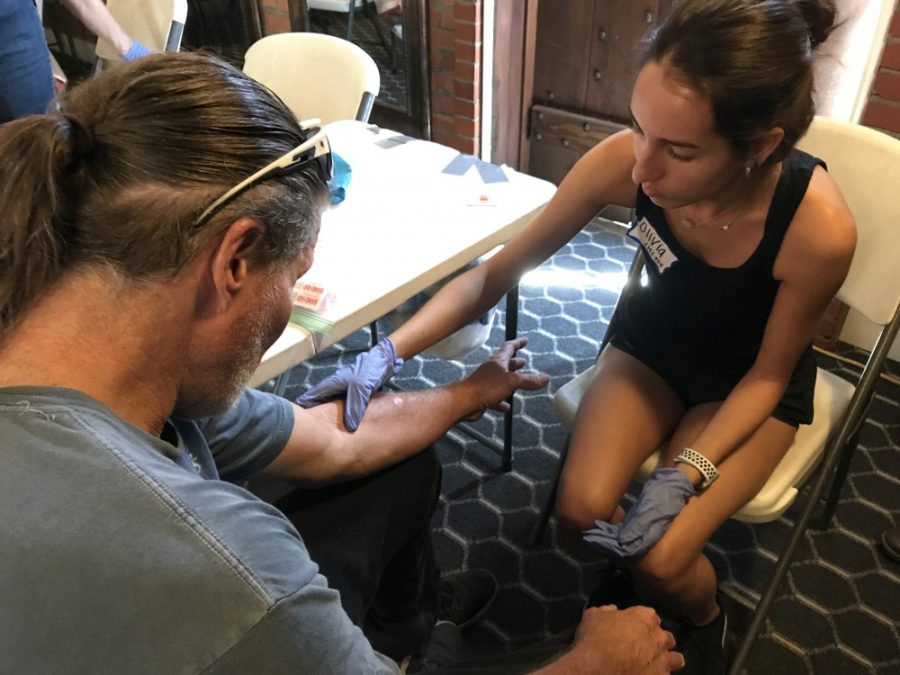“Street medicine,” or the ability to provide health care directly to the homeless population on the streets, is a key focus for students in CHS 334 – Community Health Care.
“This class is supposed to show people that there are very specific things you need to understand about dealing with the homeless or refugees,” said Tom Hill, the instructor of the course.
RELATED: ROTC collecting boots for homeless veterans
Some members of the homeless population that Hill works closely with talk to him and create videos about their experiences in hospitals and everyday life, which are shown to the students in class.
Stories detail drug addictions, getting kicked out of hospitals or getting in fights out on the streets. Hill uses the stories to teach students how to react to these situations and to deal with them in the proper way.
“The majority of the good information in the class are the videos from the homeless; they get to explain what it’s like out there. I’m not the expert. The people who are the experts are the homeless,” said Hill.
This semester is the first time the course is being taught on campus. Terrence Hill, a professor within the UA Department of Sociology, heard about the idea of street medicine and reached out to Tom Hill about potentially teaching a class.
Tom Hill and his wife Emmeline have been working with the homeless for the past 20 years and have gained experience in dealing with their specific needs. They wanted to be able to share that knowledge with up-and-coming medical professionals.
The course itself was 10 years in the making, and was previously taught to nurses and physicians but is now adapted into a college course.
“The homeless are a population that are often dehumanized and highly underserved,” said Terrence Hill. “This program is an opportunity to shape future health care providers’ preconceptions about the homeless.”
A big part of the course is showing the students that the homeless population is composed of real people with real struggles.
In the most recent class, students learned about self-defense and mass casualty assessments. The class discussed topics such as domestic abuse, fighting and difficult patients in the homeless community, while a PowerPoint at the front of the classroom displayed the phrase “The world of the homeless is … violent.”
There was also an in-class simulation, in which students had to react to a ‘mass casualty’ and test their knowledge. Two students were secretly chosen to be the ‘killers’ and fake-stabbed lots of the other unsuspecting students. The unharmed students then had to practice addressing wounds, dealing with scared and difficult patients and applying pressure and gauze to an open wound.
They also learned to use a tourniquet — or create a makeshift tourniquet out of any supplies they could find — for more serious wounds.
RELATED: Mobile MediCats bring health awareness to homeless
Megan Rumble, a sophomore enrolled in the course, said, “This is stuff you don’t get to learn until you’re in medical school, but it has real-life application. It opens up your eyes to how much help you can be without having a ton of experience yet.”
Three weeks in, the course’s enrollment is maxed out, and not a single student has dropped or withdrawn from it. Tom Hill says he hopes to continue to teach this course at UA for as long as he can.
Follow Quincy Sinek on Twitter









